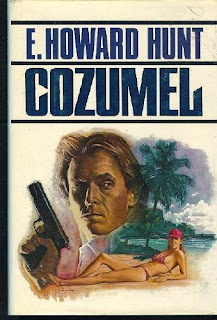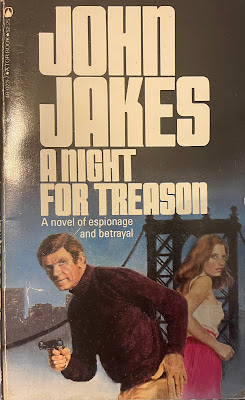Pieces of Modesty is a collection of six Modesty Blaise short stories by Peter O’Donnell written in the 1960s and compiled into one paperback volume published in 1972. The book remains available today as a paperback reprint and ebook.For the uninitiated, Modesty Blaise is a former Baltic organized crime boss who retired and now works as a British spy along with her hyper-competent sidekick, Willie Garvin. The series began as a comic strip and evolved into a popular series of novels. Pieces of Modesty is the first of two short story collections written by O’Donnell.
“A Better Day to Die”
Modesty and Willie are traveling through a Latin American Banana Republic, so Modesty can say goodbye to an old member of her criminal network who is now dying at the ancient age of 60. A mishap with their car leaves Modesty bumming a ride in a school bus with a missionary preacher and his students. On the ride, Modesty has to endure the pacifist reverend’s diatribe against the violence Modesty has deployed throughout her life.
The excitement heats up with the bus is forced off the road by guerrillas who take the passengers hostage. Will the preacher change his stance when Modesty does her thing to save their collective hides? This story is pure awesomeness and made me wish straight-up action-adventure short stories were more of a phenomena outside the pulps.
“The Giggle-Wrecker”
The British government wants a wannabe defector scientist out of East Berlin and working in London for the Good Guys. However, bringing a valuable human asset from the other side of the Iron Curtain is no easy feat. The solution? Modesty Blaise and Willie Garvin.
This reminds me of a heist story where a team of professionals needs to smuggle contraband out of a secured area and everything goes to holy hell in the process. Tack on a very clever twist ending and we have some very fun reading, indeed.
“I Had a Date with Lady Janet”
This story is noteworthy in the Modesty Blaise universe because it’s the only one narrated in the first person by Modesty’s badass, Cockney sidekick, Willie Garvin,. When not running missions with “The Princess,” Willie runs a pub 25 miles from London called The Treadmill.
In the story, Willie is involved in a casual dating situation with a one-legged gentry gal named Lady Janet. One night before a date with Janet, Willie learns that Modesty has been kidnapped by an old nemesis looking to exact revenge. Will Willie break his date with Lady Janet to rescue Modesty? You betcha.
This is another great story, and having Willie as a narrator was a lot of fun. It really was his adventure - like a Sherlock story featuring an adventure of Watson. Don’t skip this one. Savor it.
“A Perfect Night to Break Your Neck”
Modesty and Willie are enjoying catching up with some old friends over dinner in France. As they're leaving the restaurant, the group is attacked by knife-wielding thugs. Why on earth would someone mount an attack so ham-handed and lacking finesse? The mystery deepens as the attacks keep coming in different venues.
I had trouble connecting with this story or even understanding the stakes and character motivations. You may have better luck. Alternatively, it can safely be skipped altogether.
“Salamander Four”
Modesty Blaise is working a side-hustle as a model for a sculptor in Finland, because, well, of course she is. And during the weeks of modeling for the artist, a lovemaking relationship ensues. One night during the sexual afterglow, a severely-wounded man comes to the house after having been pursued by gunmen through the night. Modesty and her sculptor provide the man sanctuary in the house.
The adventure thrusts Modesty into the world of industrial espionage and gentlemen thieves. Bonus points for some cool knife work from Willie Garvin. This story is another winner.
“The Soo Girl Charity”
The final story of the collection has an oddly comical set-up. A wealthy industrialist jerk pinches Modesty’s ass on the street, and she decides that he owes her $5,000 for the pleasure. She and Willie plan a complicated operation to collect the money through a safecracking burglary heist.
During the burglary itself, the duo stumbles upon indicators that the target is into something way more sinister than pinching bottoms, and the story unfolds from there. This is a great heist story with a clever plan for revenge and a handful of surprises along the way. Whatever you do, don’t skip this one.
Paperback Warrior Assessment
Pieces of Modesty is one of the finest single-author, recurring-character, short story collections I’ve ever read. There just aren’t enough short story collections from the action-adventure paperback era, so savor this one. Highest recommendation.
Buy a copy of this book HERE.


























